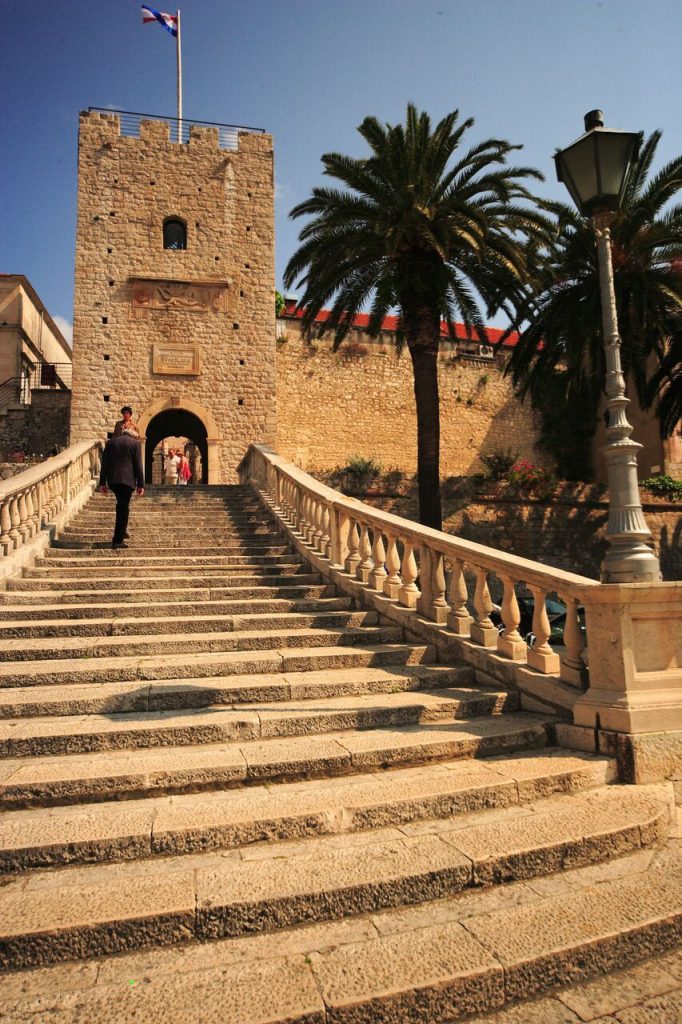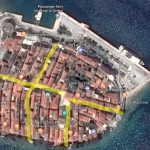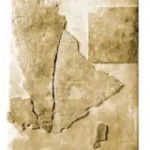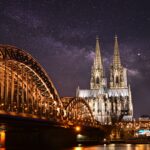The first mention of the towers of Korčula is, quite predictably to anyone who’s ever read anything about history of Korčula, in 13th century, in Korčulan Statute. That document in its introduction states that the walls around the town, as well as the towers helping defend it were restored by one Marsilie Zorzi – indicating, of course, that they were built even before that if they needed restoration.
There have always been two entrances to the Korčula Old Town – the one from the land, located at the southern side of the Old Town, and the second one from the shore, on the western side of the town. In the 15th century we know that the defensive wall was built around the entire circumference of the old town (750 meters). During that expansion of the protective infrastructure, several additional towers were built into these walls, but the number of towers has changed during history. The locations have mostly been kept constant, as they were located so to allow for the best protection of the town from any and all intruders.
There were many towers in the past that we’re not sure where exactly they were located or what they were called, we can only speculate. What we know is that in the 16th century the last of the Venetian towers and structures were built, and that after that dangers were not so strong, and the walls were not taken care of as much as they were in the past, and time took its toll on them.
In late 19th century the Austrians (who else?) did a careful description of the defensive system of Korčula, explaining the towers thus:
– square tower above the main town gate on the south side entrance – today it’s called the Large Revelin Tower (Kula Veliki Revelin), it’s the one you’ll see on the most of the postcards from Korčula (does someone really still send those?)
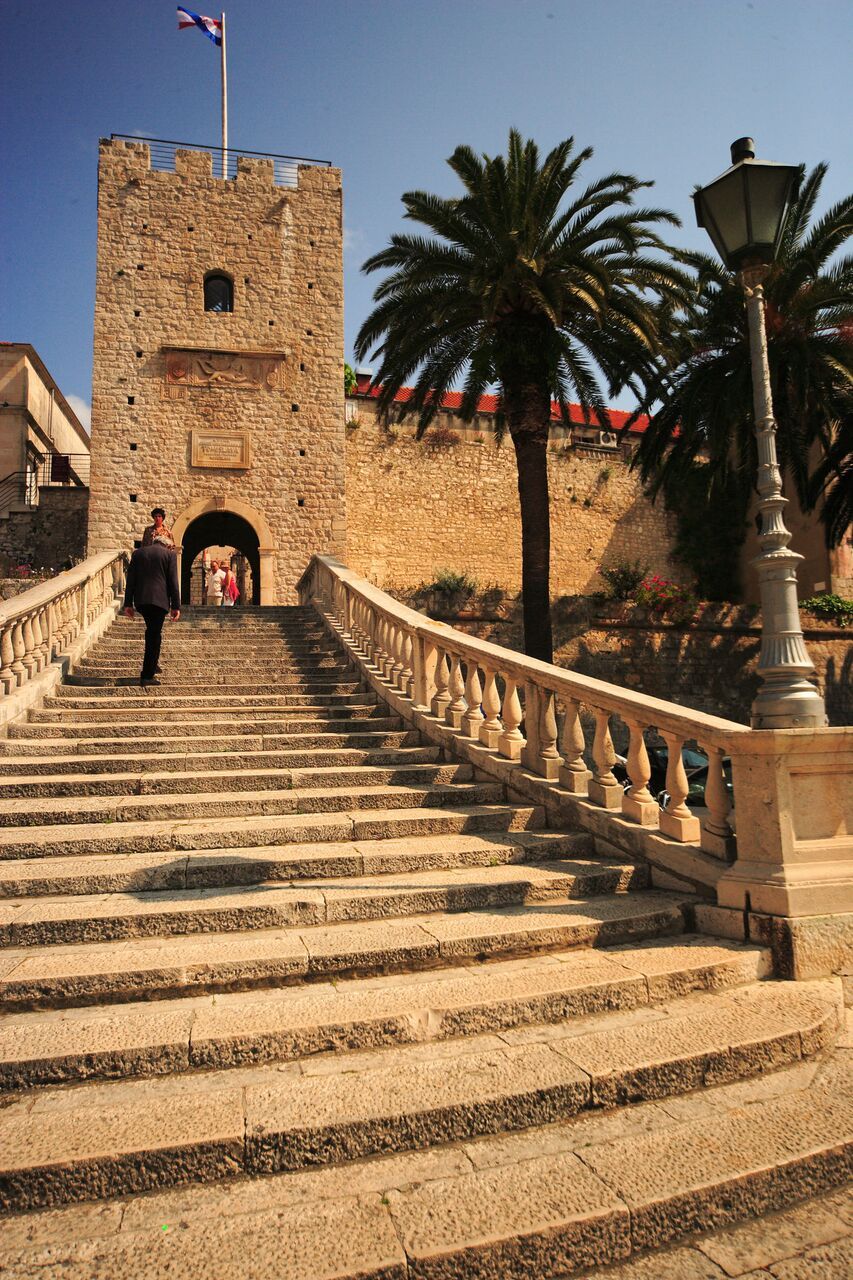
– to the west of Large Revelin the Governor’s Palace was located, and it was protected by the another square tower, Dungeon Tower (that one does not exist today anymore; supposedly it was converted into a building at some point), and two round towers, the Large and Small Governor’s Tower (Velika i Mala Kneževa Kula). You can still see both of them today, the tall lankier one is called the Small, while the Large Governor’s Tower is the big wide tower who’s side you will pass almost daily in Korčula.
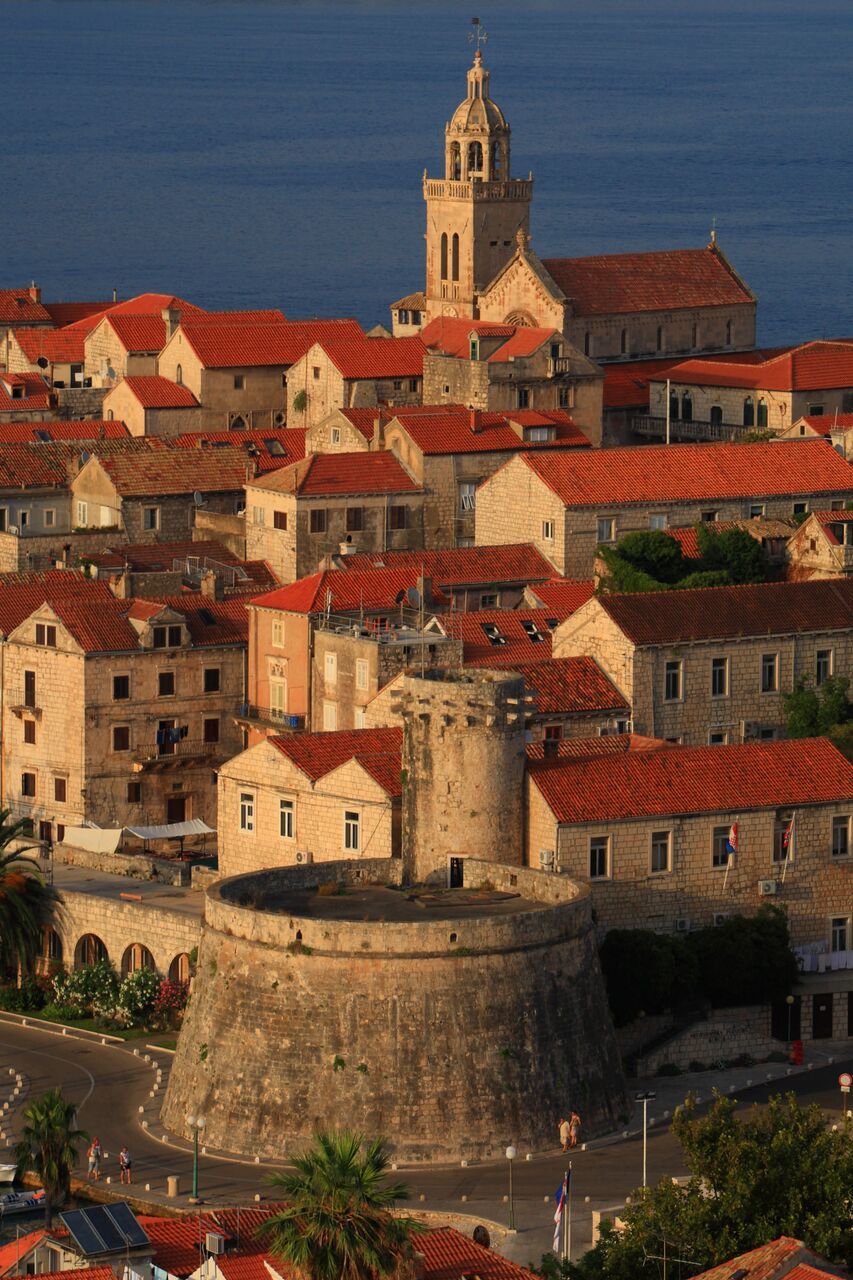
– if you continue going clock-wise from the Governor’s Towers, the next tower you’ll come across is the Tower of Sea Gate (Kula Morskih vrata), square building right next to the eastern entrance to the town, today still visible but hosting an art gallery
– next one after it is the Bokar Tower (often called “Kanavelić Tower” as well, after the famous Korčulan 16th century poet Petar Kanavelić, who lived in the building right next to it), it’s actually one half of a tower and it looks kinda funny. These days, chef’s table of the restaurant De Canavellis is located in it, so there’s an option of having your dinner in an actual medieval tower!
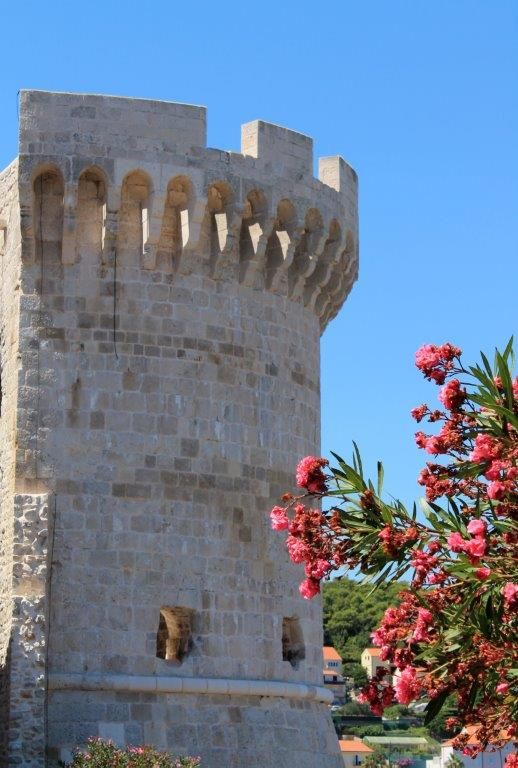
– The other one is very close to it, at the northern-most tip of the Old Town, Zakerjan or Berim Tower, the other half-tower, similar in appearance to Bokar. These days there’s a cocktail bar Massimo on top of the tower, with an amazing view of the sunset during summer evenings and an ingenius way of delivering drinks to the top.
– at the south-east side of town a big, wide but not too high tower called All Saints Tower (Kula Svih Svetih; often also called Rampada as it is located at the bottom of the Rampada road, going along the town walls). On top of the All Saints Tower the cannons remain, which were part of the protection of the town, and there’s often live music on the tower-top. Because the tower is not really that high, it’s possible to be there and not even realize that it’s the tower you’re standing on, especially during night.

